Portuguese artist plants a wall of blossoms in Shekou
Writer: Wei Jie | Editor: Lin Qiuying | From: Original | Updated: 2025-07-03
Video by Lin Songtao
Amid the narrow alleys of Shekou’s Weizai community, a seemingly ordinary blue wall outside of Yulin Kindergarten has been quietly undergoing a poetic transformation, thanks to the dedicated work of Portuguese artist Maria João Príncipe.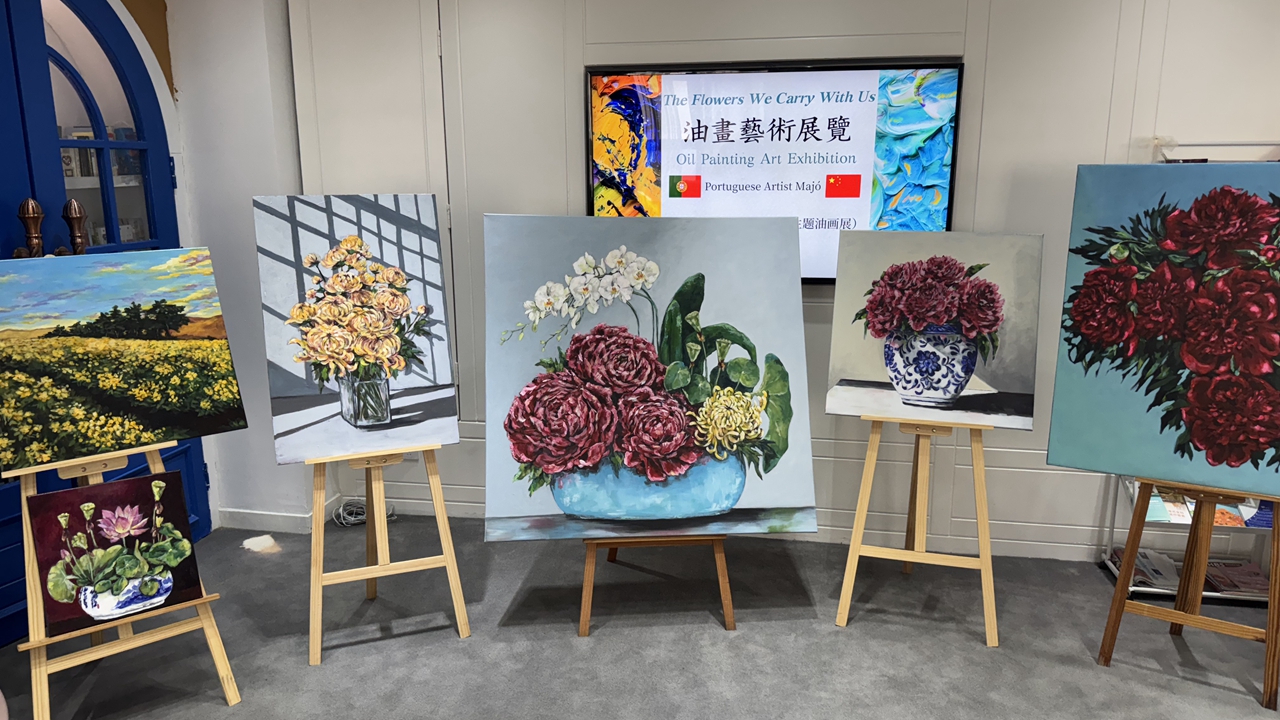
Maria João Príncipe's exhibition at the Shekou MSCE. Photos by Lin Songtao except otherwise stated
Widely known as Majó, the artist’s public mural project is bringing a vibrant tapestry of flowers to life. It is part of a nonprofit community program, initiated early this year by the Shekou Management and Service Center for Expats (Shekou MSCE), that aims to brighten the neighborhood through artistic expression and foster a stronger sense of community.
Floral mural in narrow alley
On Thursday afternoon (June 26), Majó was seen painting striking red peonies on a blue wall in a narrow lane off Huaguo Road. Despite the summer heat, buzzing mosquitoes, and occasional heavy downpours, she worked tirelessly, sweat beading on her forehead, paying little mind to passing mopeds as she delicately brushed petals to life.
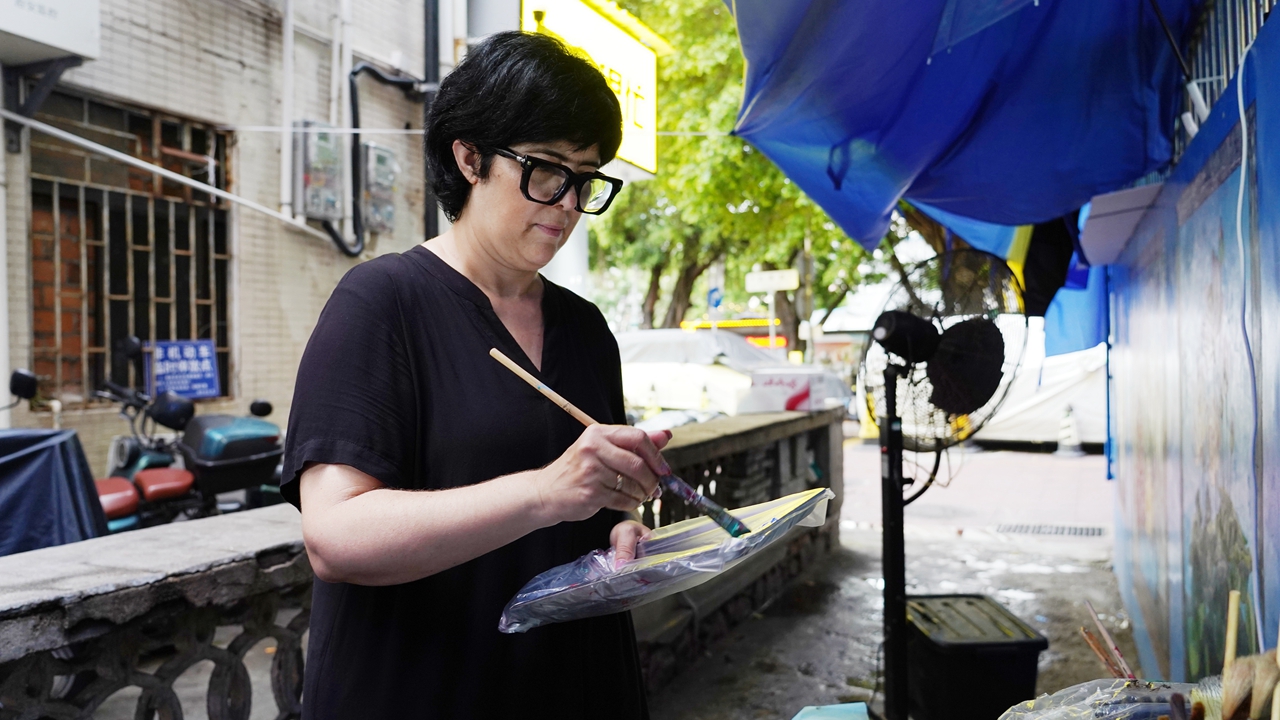
Maria João Príncipe paints in a narrow lane off Huaguo Road.
This was the third week that Majó worked on the mural, titled “The Flowers We Carry With Us.” The mural consists of five iconic Chinese flowers: the elegant spring orchid, the pure summer lotus, the noble autumn chrysanthemum, the resilient winter plum blossom, and the majestic peony.
Alongside each flower, the artist has carefully selected lines of classical Chinese poetry that reflect the cultural meaning and symbolism of the depicted flower in Chinese culture.
Motivated by her affection for Shekou, where she and her husband Isaias Praxedes de Luna have lived since relocating from Portugal in 2018, Majó accepted an invitation two months ago from the Shekou MSCE to create a public art piece for the Weizai community.
Majó said she was inspired by the villagers’ flower pots, which evoked memories of similar scenes in her home country, when she explored the Weizai urban village with Rita Yang, director of the Shekou MSCE.
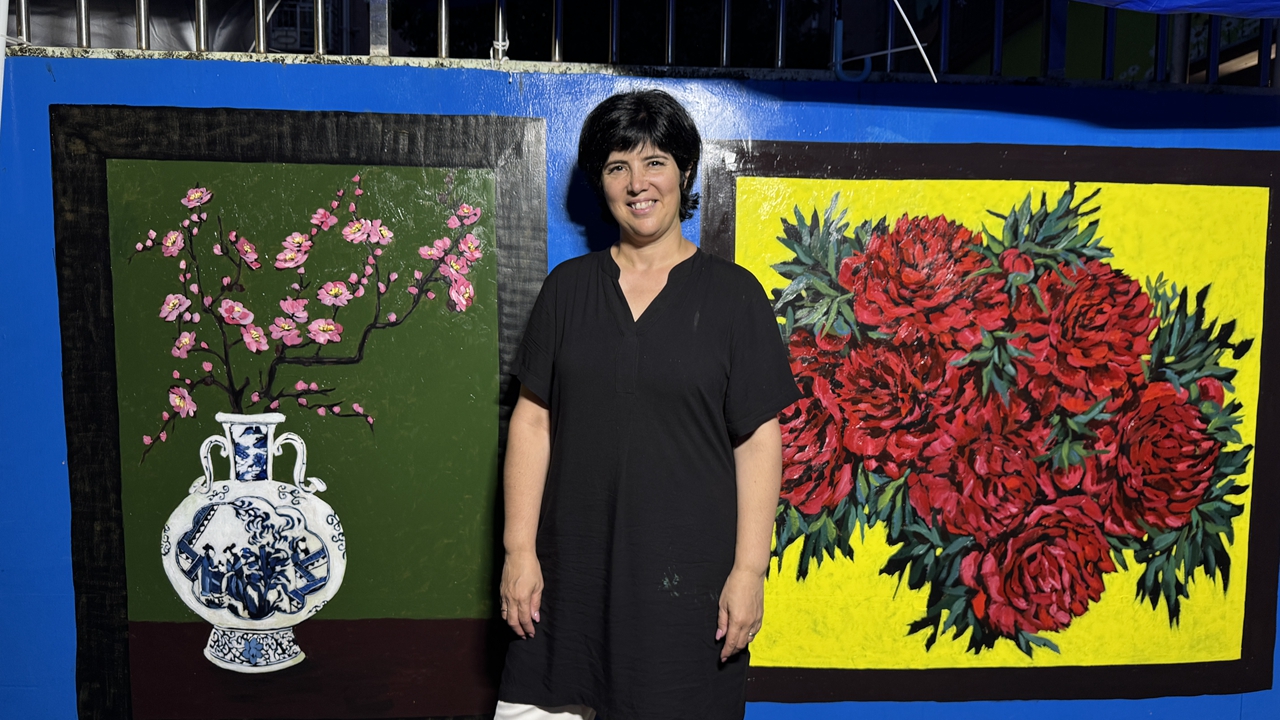
Portuguese artist Maria João Príncipe stands in front of a wall she decorated with floral paintings in Shenzhen's Shekou area. Ariel Lee
“I wanted to let the flowers step out of pots and bloom eternally on the wall,” said the artist, who decided to create an open-air “gallery” where passersby could enjoy the beauty of floral art. She then spent more than a month meticulously designing the mural and refining her concepts before starting to paint.
Challenging task
The work proved challenging. During her first week, Majó faced intense summer heat and aggressive mosquitoes. Sudden downpours trickled down the wall, turning freshly painted floral buds into mottled patches. The artist was forced to pause, waiting patiently for the wall to dry before continuing.
However, she likened this adversity to a lotus blooming from the mud — a powerful symbol of perseverance in Chinese culture that fueled her passion for the project. “I would say coping with the weather has been the biggest challenge for this project,” said Majó.
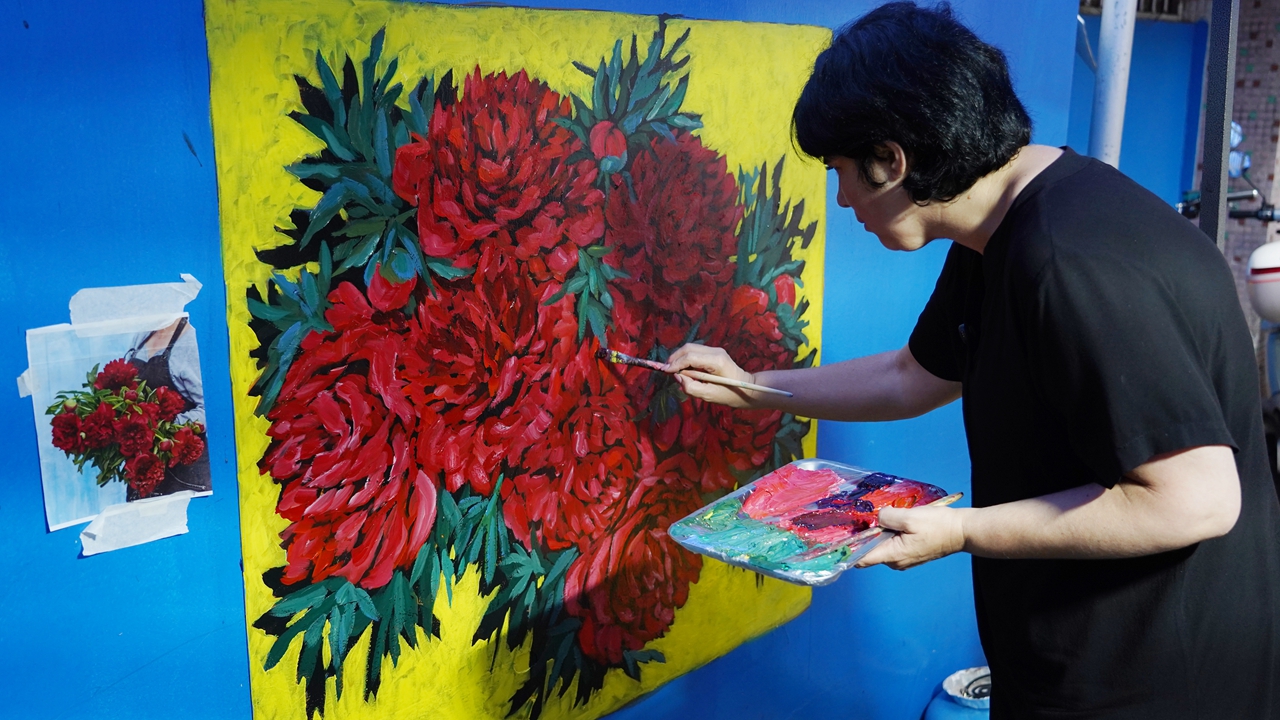
Maria João Príncipe paints in a narrow lane off Huaguo Road.
To help solve one of Majó’s frustrating experiences during that first week, her husband and staff from the Shekou MSCE set up tent structures to shield the mural from unpredictable showers. “Apart from the weather, everybody has been incredibly helpful around here.”
With clearer skies returning in the second week, Majó resumed painting the “powerful” picture of an elegant white orchid surrounded by peonies, lotuses, plum blossoms, and chrysanthemums, each symbolizing seasonal blessings.
“When all these flowers bloom together, it’s like an explosion of blossoms. To me, it represents how we go through life, moving through many seasons,” the artist reflected.
Warm response encouraging
Despite the hardships, Majó said the community’s warm response made it all worthwhile. “People come every day after work to watch the progress. Kindergarten children bring their parents, and some residents try to share stories about the flowers from their hometowns,” said the artist, who would say “thank you” in Chinese.
Hearing passing children praise her work by saying “piao liang” — meaning beautiful — always brings a smile to her face. “Not only do their compliments make my day, but more importantly, this is exactly what I set out to do — to bring beauty to the children and let them grow up appreciating such beautiful things. That means everything to me.”
Majó said she was particularly impressed by a mother and daughter who came to admire the evolving mural every day. Upon seeing Majó painting the orchid, the little girl once asked her mother, “What is the auntie drawing, mom? It’s very beautiful.”
The mother, who gently explained to the girl that it’s an orchid, said, “Maybe someday we can learn to paint like her, OK?” The girl’s eyes brightened, and she nodded her head in response.
Open-air gallery taking shape
Majó’s creative endeavor was nearing completion as the third week drew to a close. “I just need to add some final touches to the yellow background against the vibrant red peonies, followed by a dark brown frame for the mural,” the artist told Shenzhen Daily late Thursday afternoon.
Looking back, the process of creating the plum blossoms was a journey from strict patience to freer expression. Initially, the artist found it challenging, describing it as a “test of her patience” because the small flowers and their pot required meticulous observation.
Unlike working from a clear reference photo, Majó focused on assembling shapes to form the composition, which made the process difficult but rewarding. “My husband said to me that he could even see the people within the pot in the painting,” she said, highlighting the level of detail achieved.
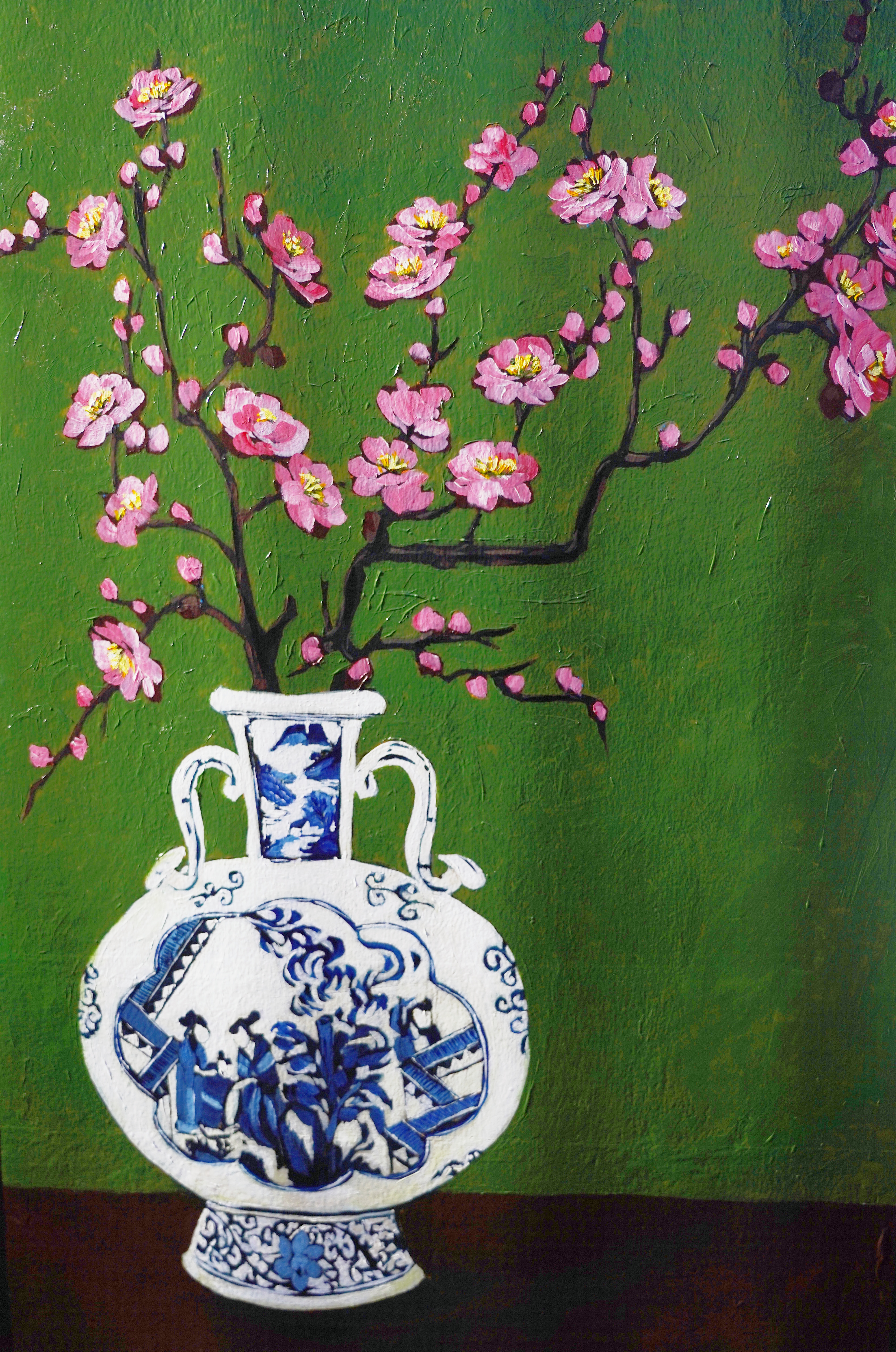
A close shot of part of Maria João Príncipe's creation for the themed mural.
Now Majó prefers a more spontaneous approach — she simply picks up the brush and paints, refining the imagery as she progresses. She creates vibrant contrasts by layering darker colors with lighter ones, which clearly distinguishes each plum blossom as it comes to life.
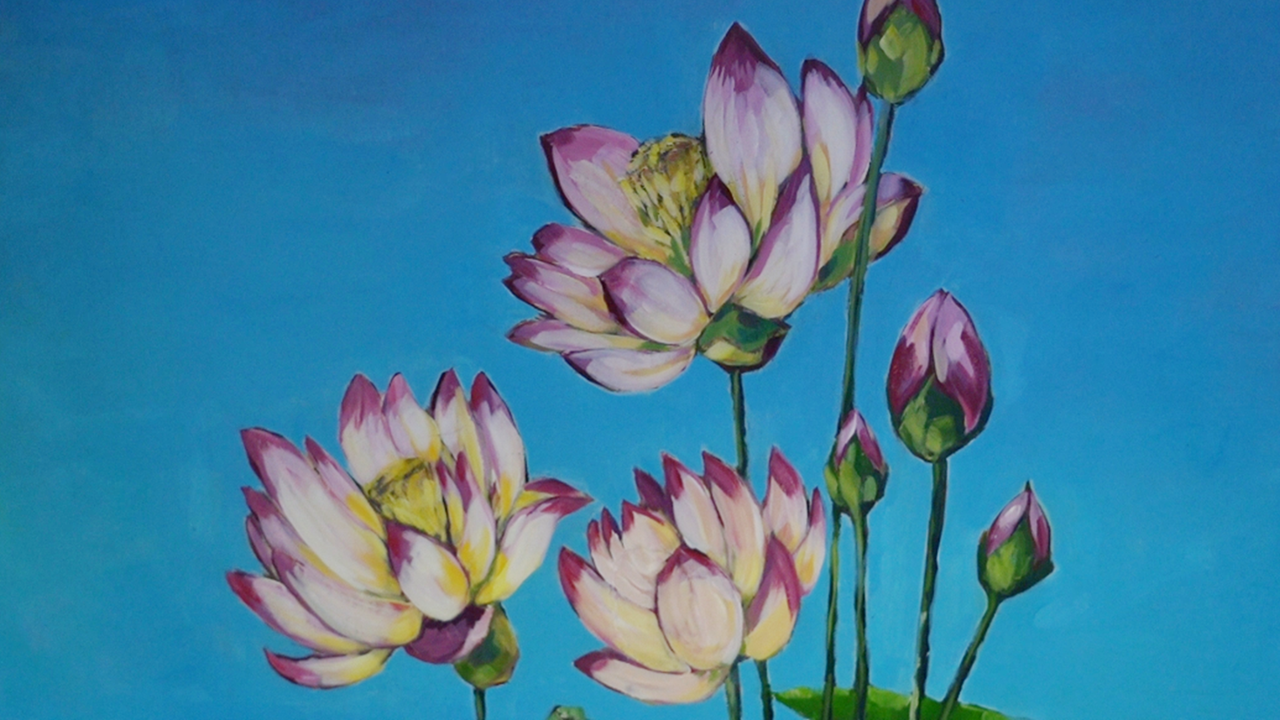
A close shot of part of Maria João Príncipe's creation for the themed mural.
Following three weeks of dedicated work, an open-air “gallery” has taken shape in the Weizai community, with the mural’s colors bursting vividly against the blue backdrop.
The artist planned to create another mural in the Weizai community, featuring the same kinds of flowers but in a different style. However, Yang said they are still assessing the feasibility of painting another mural due to safety concerns.
“That wall is so much higher that it would need scaffolding. However, the ground isn’t very even. That’s our primary concern, although a mural there would definitely brighten up the community significantly,” said Yang, adding that Majó was set to work on a mural outside the Shekou Ocean Museum and the Shekou MSCE on Shiyun Road after the kindergarten piece.
Child-friendly community drive
Majó’s floral artwork is part of a nonprofit community mural project initiated by the Shekou MSCE a couple months ago. The creative initiative aims to transform the neighborhood into a child-friendly environment while fostering a stronger sense of community.
On the first day of the May Day holiday, a group of students and teachers from an international school in Shekou came together to transform the walls of the Weizai community with a series of murals themed around child-friendly living.
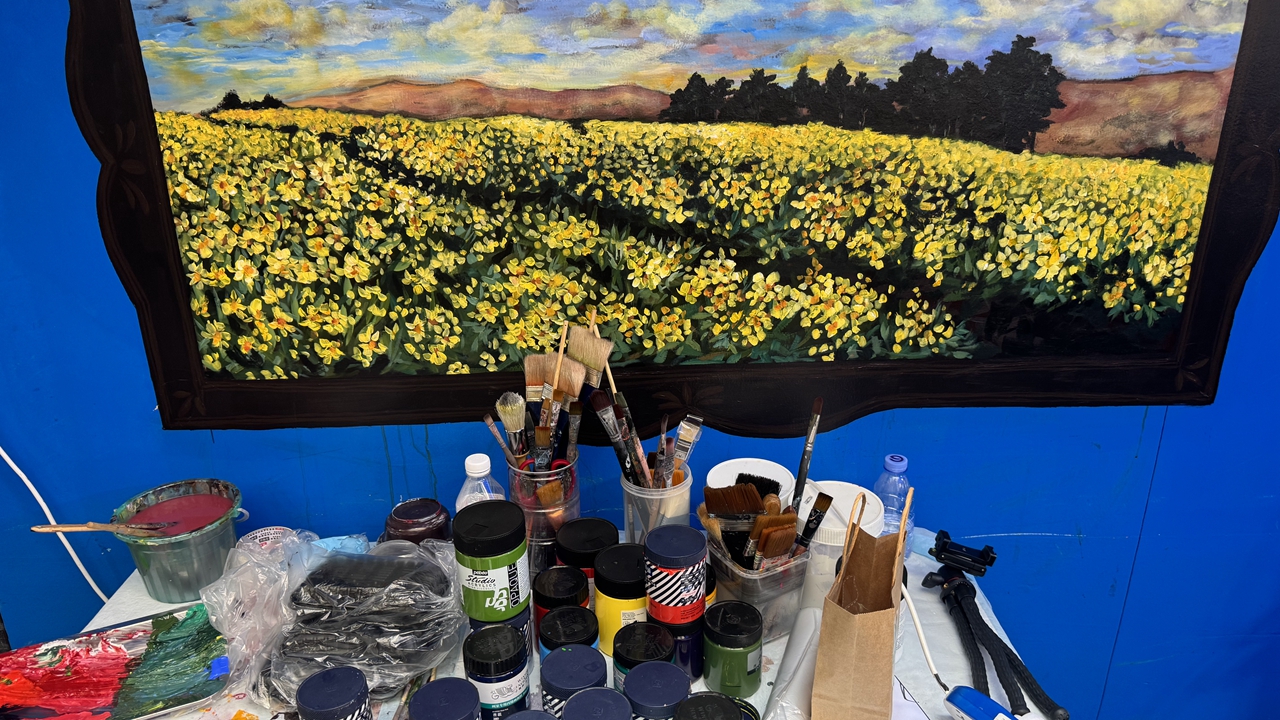
Maria João Príncipe's brushes and paints in front of the mural.
“The idea of launching meaningful volunteer projects was conceived earlier this year,” said Yang. “We wanted the projects to not only engage international volunteers in activities, but also enable them to directly connect with the local community, promoting goodwill.”
According to the director of the Shekou MSCE, her colleagues had initially worked with various community-level government departments and international schools to come up with different programs, such as visiting and assisting vulnerable groups. Due to practical reasons, only the community mural project has been fully carried out, Yang explained.
“[Majó] immediately agreed to get involved after hearing my proposal,” Yang recalled, describing how she toured the Weizai community with the Portuguese artist, who was excited to see the child-friendly murals created by international students.
The Weizai community, an urban village in Shekou, is home to more than 2,000 migrant children. In recent years, the community has implemented a series of initiatives to create a more child-friendly environment, including the opening of a children’s library, according to a community official who preferred not to be named.
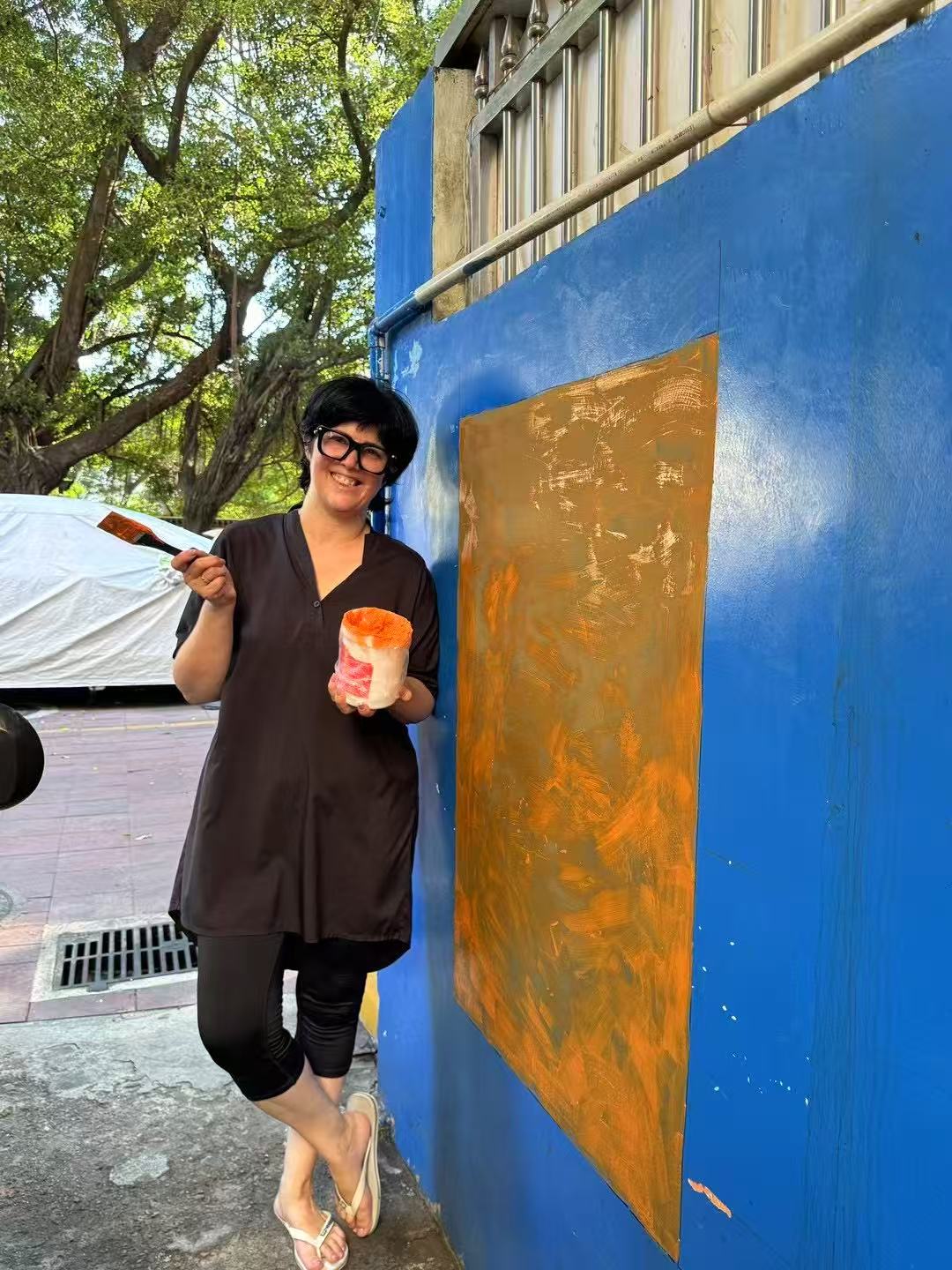
Maria João Príncipe in the middle of painting. Ariel Lee
“The floral mural created by Majó is definitely a valuable addition to our efforts in building a child-friendly neighborhood, as her artwork has planted a lasting seed of cross-cultural friendship and artistic inspiration in the heart of the village children,” said the official.
Yang expressed hope that the project would help promote cultural exchange and foster greater integration between local residents and the expat community in Shekou.